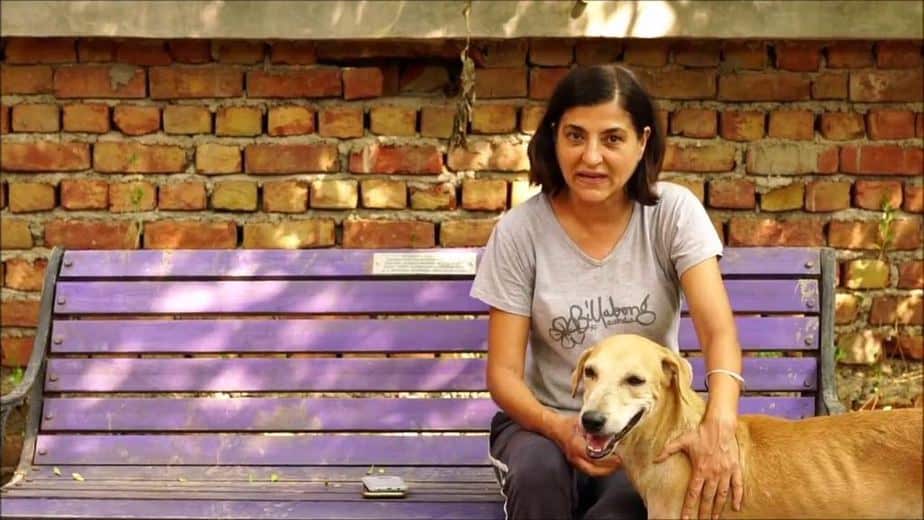
“An animal shelter is a very heartbreaking place,” said Ambika Shukla, Director of the Sanjay Gandhi Animal Care Centre (SGACC), to someone over the phone. We know how devastatingly right she is.
With Delhi’s current weather conditions at their bipolar best, the strays in the city are paying the price dearly. Our co-habitants with paws, claws, and hooves are finding it hard to battle it out on the streets. Animal shelters across Delhi are having a hard time keeping up with the number of unwell animals that they have to deal with every week and are overwhelmed with work. Although animal adoption rates are rising in the city, the rate at which animals are leaving the shelter is nothing compared to the rate at which they are coming in.
SGACC, one of the leading animal care centres in Delhi, currently houses over 3,000 animals, ranging from dogs, cows, rats, and birds to camels. The 4-acre property was turned into an animal shelter by Maneka Gandhi, kicked off by the Ruth Cowell trust of Rs 7 lakh. Stepping past a few dozen cows in the shelter, Shukla and be seen in a mud-stained t-shirt and sneakers,overseeing the staff. She speaks of the abysmal condition of stray and pet animals not only in Delhi, but all over the country. “People use these animals for business — mares for weddings, cows in dairies — but make no attempt to maintain them,” she frets. Once the animals become useless or inconvenient to the owners, they simply leave them on the streets.
Horses are left on the streets with their legs broken, and cows are let go if their backs break, as that is an injury for which there is no cure. According to Shukla, people in Delhi are regressively becoming more and more intolerant towards stray animals, not realising the damage they are doing to their own immediate ecosystems in the process. “Seventy per cent of India depends on animals,” she adds. Without these stray dogs and rats, the organic matter in our garbage would never decompose, it would simply fester and putrefy.
On being asked what could be done to create more awareness, she says, “We have to teach kindness towards animals the way we teach kindness towards humans.” Starting from schools, where animal welfare could be made a subject, to celebrity endorsement of adopting strays, she suggests a number of ways to awaken our conscience towards animals. Shukla’s own home houses 17 stray dogs that she adopted over the last few years.
A report by Euromonitor International suggests that India is the fastest growing global pet market. Consequently, there has also been a rise in the demand for products like pet health care products and pet food. But most of the animals that are being adopted are foreign or exotic breeds. The demand for premium pet foods has risen in urban areas, according to a report by IIPTF (India International Pet Fair Trade). And the strays continue to be ignored.
Some initiatives do lend hope, though. Social media pages have been created by animal lovers to help speed up the animal rescue process. They take pictures of hurt or unwell animals and put out its current location. A group of citizens then works to contact the nearest rescue facility for the ailing animal. Brutality towards animals has increased over the years, with stray dogs being beaten, burnt, or poisoned; some vegetable vendors keep a bottle of acid to throw at cows who stray towards their carts. Cows often suffer accidents on the streets of Delhi.
Other shelters around Delhi are also doing their very best to protect and support the strays. PAWS (Pet Animal Welfare Society) takes in all kinds of pet and stray animals, and they work to spread awareness about their safety. They even conduct anti-rabies campaigns all over Delhi. Red Paws Rescue is an NGO that is devoted to rescuing and rehabilitating stray and abandoned dogs, and also find new homes for them. Another well-known animal rescue facility is Friendicoes — they have a clinic for strays, two operation theatres and a lab unit, and house thousands of animals. The Charity Bird Hospital in Chandni Chowk is worth mentioning, as they treat all kinds of birds for free.
Despite these well-meaning efforts, much more needs to be done. Animals often have to be taken long distances for treatment. Veterinarians and shelters should be just as common as clinics and hospitals.
“I’ve never met an animal I didn’t like, and I can’t say the same thing about people,” said Doris Day. Perhaps it’s time for more of us to appreciate our strays.
Delhi Fire Service has initiated comprehensive fire safety inspection drive in restaurants, hotels and clubs…
Out of 40 air quality monitoring stations across the city, 14 recorded severe air quality…
Govt, however, acknowledged that air pollution is one of the triggering factors for respiratory ailments…
Rising air pollution levels in the capital, the Delhi government on Thursday undertook a comprehensive…
Parents say online classes during severe air pollution ignore the digital realities of economically weaker…
Rival leagues trigger players’ suspensions and a legal battle in Indian golf, for now